History’s Best Admirals Ruled Over the High Seas and Forever Changed Naval Warfare
Throughout maritime history, admirals have served as testaments to strategic brilliance and bold leadership. From ancient times to the modern era, they have shaped the world through their mastery of naval warfare, innovation in tactics and unwavering commitment. The following list explores history’s best admirals who’ve left an indelible mark on naval history, highlighting their battles, innovative strategies and enduring legacies.
Horatio Nelson, 1st Viscount Nelson
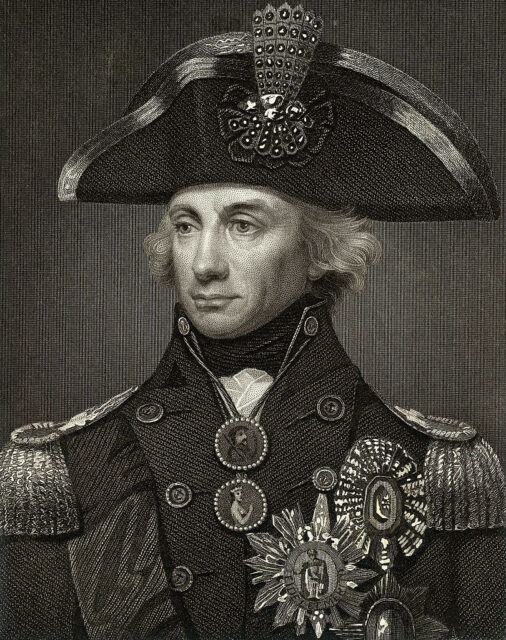
Horatio Nelson is considered one of history’s best admirals for his innovative tactics and decisive victories that established British naval supremacy during the Napoleonic Wars. Nelson’s strategic brilliance was exemplified in the likes of the Battle of the Nile in 1798 and the Battle of Trafalgar in 1805.
During the former, Nelson employed unconventional tactics to achieve a decisive victory, trapping and annihilating a significant portion of the French fleet, thereby crippling Napoleon’s ambitions in the Mediterranean. His most famous triumph, the Battle of Trafalgar, further demonstrated his tactical genius. Despite being outnumbered, his plan to split the enemy line not only secured a monumental victory, but also prevented a French invasion of Britain.
Beyond his tactical prowess, Nelson’s leadership and bravery are legendary. He was known for his charismatic leadership, earning the unwavering loyalty and respect of his men, and his ability to inspire his crews was key to maintaining high morale and combat effectiveness, even in the direst of circumstances.
Yi Sun-Sin
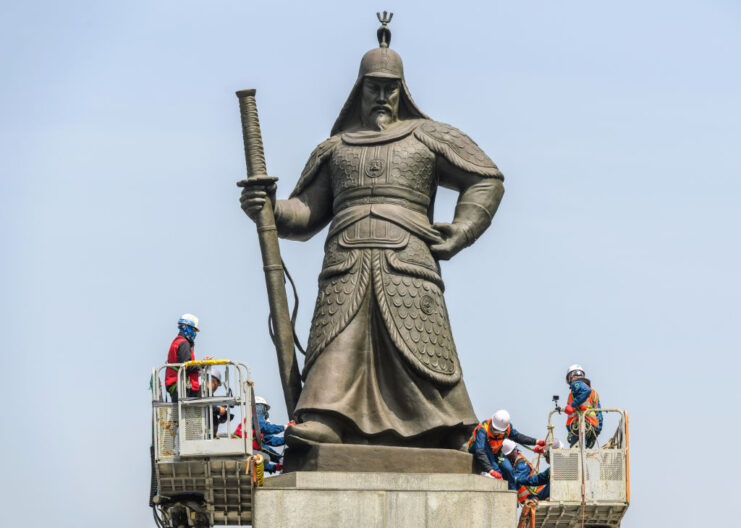
Yi Sun-Sin is hailed as one of history’s best admirals because of his extraordinary leadership and innovative strategies during the Imjin War. His most important achievement was arguably the development and use of the “turtle ship,” what’s believed to be the world’s first ironclad warship.
His tactical genius was evident in the Battle of Myeongnyang in 1597, where he triumphed against overwhelming odds. Despite commanding only 13 ships against a Japanese fleet of between 133-330, he leveraged the narrow straits’ currents and his ships’ maneuverability to orchestrate a stunning victory, inflicting heavy losses on the Japanese and safeguarding Korea from further invasions.
Yi’s leadership qualities were equally remarkable, characterized by his unwavering dedication, resilience and ability to inspire his men, which allowed him to maintain the loyalty and morale of his sailors, even when faced with political persecution and personal hardship. His emphasis on rigorous training and discipline ensured his fleet operated with cohesion and effectiveness.
Chester W. Nimitz
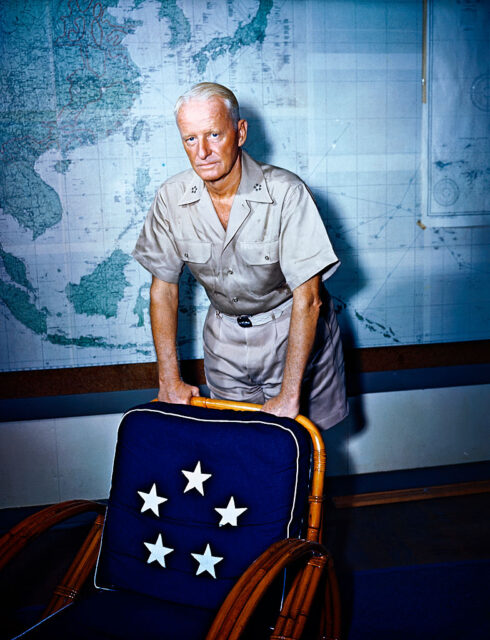
Chester Nimitz is recognized as one of history’s best admirals for role in the US Navy’s success during World War II. Serving as the Commander in Chief, US Pacific Fleet, he displayed effective strategic acumen and leadership, allowing the Allies to turn the tide against the Japanese forces.
His decision-making was crucial in the Battle of Midway, where he used codebreaker intelligence to ambush and defeat the Japanese fleet. This victory not only halted the enemy’s expansion, but it also marked a turning point in the Pacific Theater, shifting the balance of naval power to the Allies.
Nimitz’s ability to coordinate complex operations and manage vast naval resources ensured sustained pressure on the Japanese forces, culminating in successful campaigns across the Solomon Islands, the Gilbert and Marshall Islands, and the Mariana and Palau Islands.
A further deep-dive into his career also highlights his innovative approach to naval warfare cemented his legacy. He demonstrated exceptional adaptability and foresight, and modernized the Navy’s tactics and tools. Nimitz also fostered a culture of collaboration and initiative, empowering many notable wartime figures like Raymond Spruance and William Halsey to execute bold strategies.
Andrea Doria
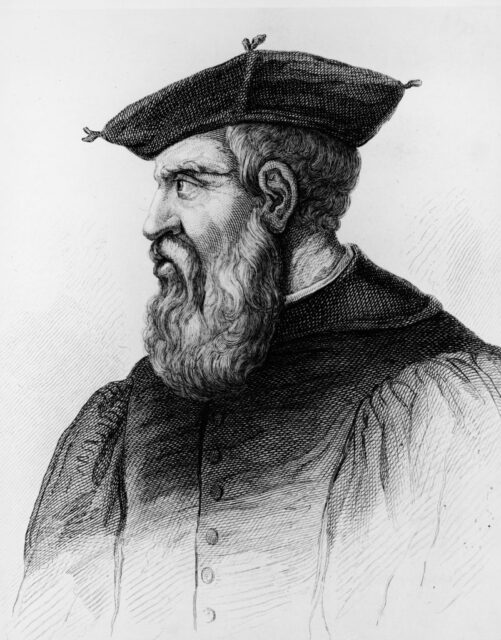
Andrea Doria is celebrated as one of history’s best naval admirals for his role in establishing Genoa as a dominant maritime power during the 16th century. His naval strategies and leadership were key in numerous conflicts, particularly against the Ottoman Empire and Barbary pirates.
Doria’s command during the Battle of Preveza in 1538, while ultimately a strategic withdrawal, showcased his tactical acumen and ability to preserve his fleet. His successful campaigns against the Barbary pirates not only disrupted their operations, but ensured safer Mediterranean passages for both Genoese and allied shipping. His negotiation skills further cemented Genoa’s position, for he managed to navigate the complex political landscape of Renaissance Europe.
Beyond his military exploits, Doria’s impact extended into politics and naval reform. He played a role in the political restructuring of Genoa, transforming it into an oligarchic republic and ensuring its stability and prosperity. His naval reforms, including the introduction of more efficient ship designs and improved training methods, significantly enhanced the operational capabilities of the Genoese fleet.
Francis Drake
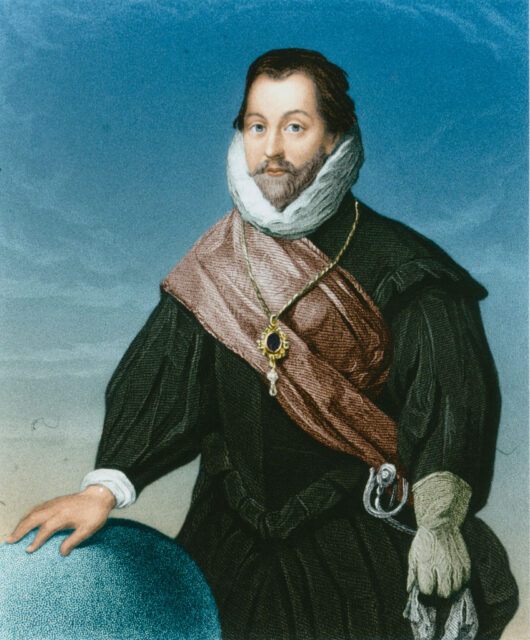
Francis Drake is celebrated as one of history’s best admirals, due to his daring exploits and strategic brilliance that impacted the balance of naval power in the 16th century. As a key figure in the Elizabethan era, he circumnavigated the globe between 1577-80, during which he not only explored uncharted territories, but also conducted successful raids against Spanish holdings, capturing immense wealth for England.
His intimate knowledge of global sea routes, as well as his ability to command and inspire his crews, were instrumental in these ventures. Drake’s role in the defeat of the Spanish Armada in 1588 further solidified his reputation. His innovative tactics were crucial in securing an English victory, thus preventing a Spanish invasion.
Beyond his military achievements, Drake’s impact on naval strategy and exploration was notable. He was a master of privateering, using his naval prowess to disrupt Spain’s economic power by capturing valuable treasure ships and attacking coastal settlements in the Americas. His leadership also extended to fostering a culture of innovation within the English Navy, encouraging consistent advancements in shipbuilding and navigation.
Michiel de Ruyter
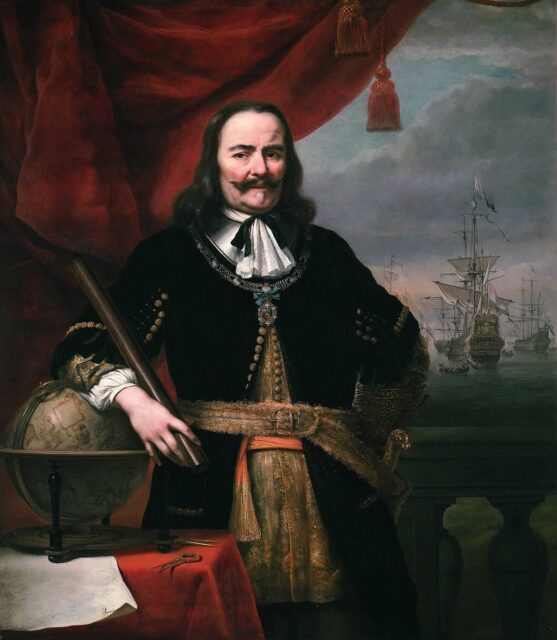
Michiel de Ruyter can be called one of history’s best admirals for his exceptional leadership and strategic brilliance, which played a crucial role in maintaining Dutch naval supremacy during the 17th century. His time at sea experienced many a victory, like the Four Days’ Battle of 1666 and the Raid on the Medway in ’67, during the Second Anglo-Dutch War.
The Four Days’ Battle, one of the longest naval engagements in history, showcased his tactical acumen and endurance, ultimately forcing the English fleet into retreat. The audacious Raid on the Medway, where de Ruyter led a daring assault deep into English territory, resulted in the capture and destruction of significant English naval assets.
The admiral’s legacy extends beyond his battlefield successes to his contributions to naval strategy. His ability to inspire loyalty and maintain high morale among his sailors was crucial in the Dutch Navy’s sustained effectiveness against larger and often better-resourced adversaries. He also emphasized coordination, discipline and the effective use of firepower, all of which aided the transformation of the Navy.
Tōgō Heihachirō
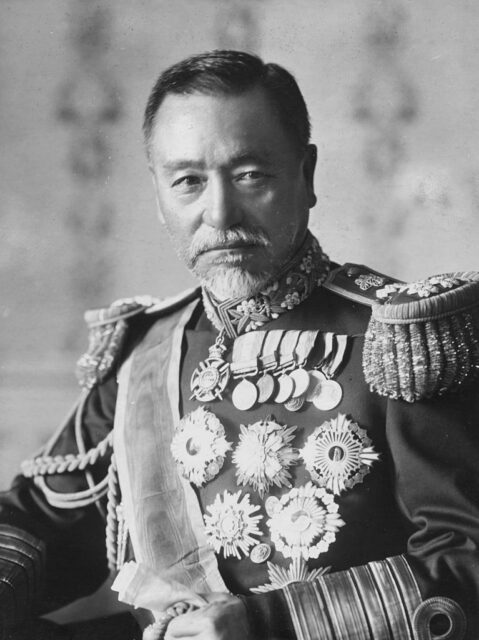
Tōgō Heihachirō is known for being one of history’s best admirals, thanks to his role in establishing Japan as a formidable naval power during the early 20th century. He was in command during the Russo-Japanese War and, during the Battle of Tsushima, orchestrated a stunning victory against the Russian Baltic Fleet, despite the Russians’ numerical superiority and the considerable distance they’d traveled. His innovative use of the “crossing the T” maneuver was instrumental in this triumph.
Beyond his tactical successes, Tōgō’s leadership and vision were key to the modernization the Imperial Japanese Navy (IJN). Influenced by his training and experiences in the British Royal Navy, he emphasized rigorous training, discipline, and the adoption of cutting-edge technologies and strategies. He fostered a culture of professionalism and innovation, and worked to inspire anyone who served under him.
Thomas Cochrane, 10th Earl of Dundonald
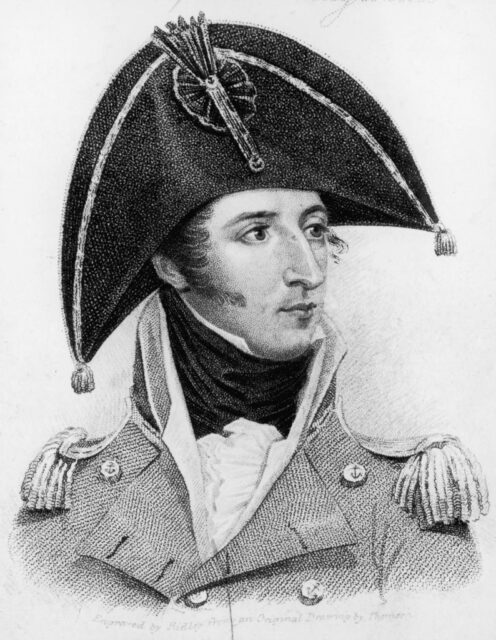
Thomas Cochrane, often hailed as one of history’s best admirals, is renowned for his daring exploits and innovative tactics that had a profound impact on naval warfare during the early 19th century. One of his most notable achievements was the capture of the Spanish frigate El Gamo in 1801, where Cochrane’s much smaller ship, the HMS Speedy (1782), outmaneuvered the larger enemy vessel.
Cochrane’s use of deception and aggressive tactics earned him the nickname, “Sea Wolf,” which demonstrated his ability to win against seemingly insurmountable odds.
Beyond his service with the British Royal Navy, the admiral played crucial roles in the naval struggles of emerging nations seeking independence; Cochrane lent his expertise to the liberation efforts of Chile, Brazil and Greece. In Chile, in particular, his capture of the heavily fortified port of Valdivia in 1820, with a small force, served as a testament to his tactical genius and boldness.
Maximilian von Spee
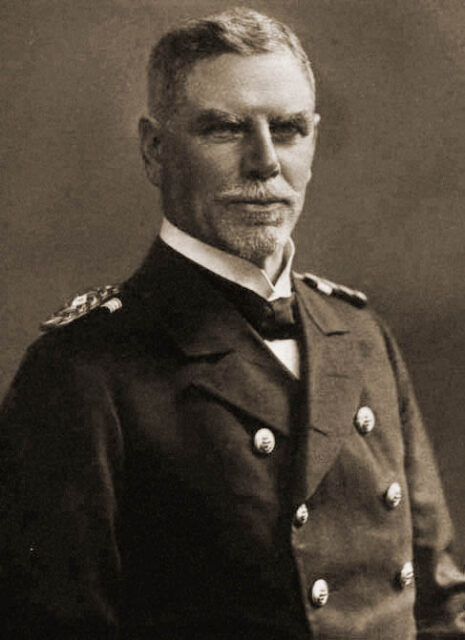
Maximilian von Spee is regarded as one of history’s best admirals, due to his exceptional command and strategic acumen during the early stages of World War I. As the commander of the Imperial German Navy’s East Asia Squadron, he showed off his tactical brilliance in the Battle of Coronel.
Facing the British Royal Navy’s North America and West Indies Station, von Spee outmaneuvered and decisively defeated the British force, sinking two cruisers without losing any of his own ships, marking the first British naval defeat in over a century.
Despite his eventual loss at the Battle of the Falklands in December 1914, where von Spee faced a significantly stronger British fleet, his prior successes and the loyalty he inspired in his men underscored his capabilities as a naval commander.
Hayreddin Barbarossa
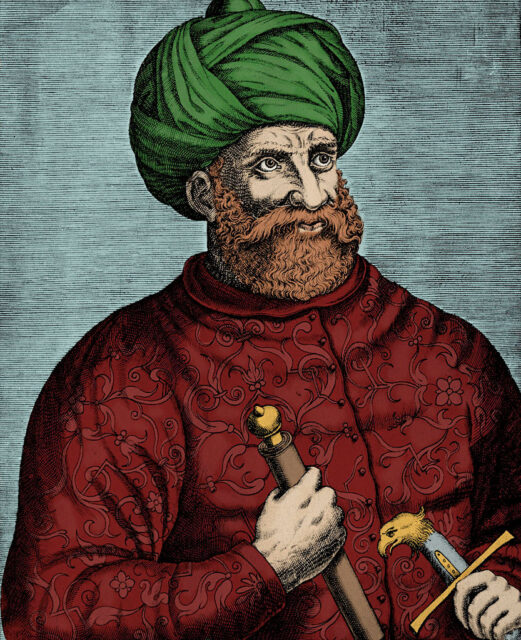
Hayreddin Barbarossa is hailed as one of history’s best admirals for his formidable naval command and role in the establishing of Ottoman naval dominance in the Mediterranean during the 16th century. As the admiral of the Ottoman fleet, he masterminded a series of significant victories that expanded and secured Ottoman maritime influence.
His strategic acumen was most notably demonstrated in the Battle of Preveza in 1538, where he decisively defeated a Holy League fleet comprising forces from Venice, Spain and the Papal States. Using his superior knowledge of naval tactics and Mediterranean waters, Barbarossa’s fleet outmaneuvered and overwhelmed the larger forces, securing a lasting Ottoman presence in the region.
Beyond his battlefield successes, Barbarossa’s naval innovations significantly contributed to the effectiveness and reputation of the Ottoman Navy. He was instrumental in modernizing the fleet, incorporating advanced vessel designs and fostering a culture of discipline and resilience among his sailors.
Willis Augustus ‘Ching’ Lee, Jr.
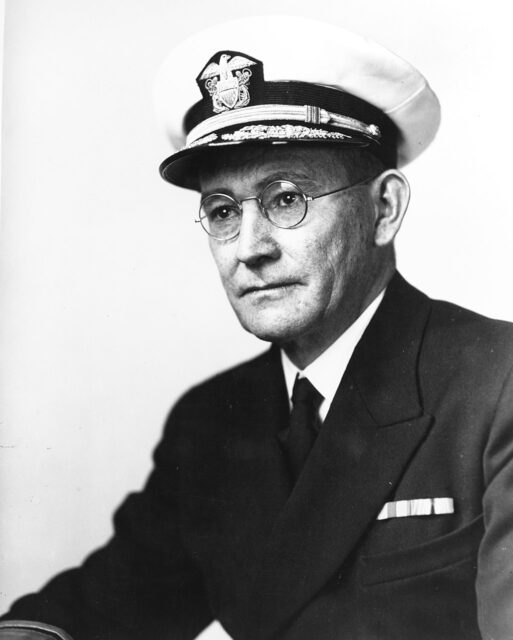
Willis Augustus “Ching” Lee is celebrated as one of history’s best admirals, thanks to his exceptional leadership and strategic brilliance during World War II.
As a prominent figure in the US Navy, Lee’s tactical genius was best highlighted during the Guadalcanal Campaign, where his aggressive and decisive maneuvers played an important role in turning the tide against Japanese forces; his command of Task Force 64 (TF 64) proved instrumental in the night actions off Guadalcanal, skillfully coordinating his forces to repel Japanese attempts to reinforce their troops on the island.
More from us: 10 Photos That Show US Navy Ships During Their Prime and Following Their Retirement
Known for his hands-on approach and concern for the welfare of his men, Lee fostered a culture of professionalism and excellence among those who served beneath him. His commitment to rigorous training and meticulous preparation ensured his sailors were prepared for combat.
The post History’s Best Admirals Ruled Over the High Seas and Forever Changed Naval Warfare appeared first on warhistoryonline.
History’s Best Admirals Ruled Over the High Seas and Forever Changed Naval Warfare
Philippines Truth
Post a Comment
0 Comments